Sharlyn J. Lauby's Blog, page 9
April 27, 2025
How to Develop a Good Company Policy

Estimated reading time: 7 minutes
(Editor’s Note: Today’s article is brought to you by our friends at Case IQ , a leading provider of case management solutions that helps companies manage the process and workflow of investigators collecting and analyzing information related to a case, with the goal of resolving issues, managing risk, and identifying opportunities for improvement. Enjoy today’s article!)
I know that sometimes organizations – and human resources departments – are accused of having too many policies. But having good policies is necessary. The emphasis here being on the word “good”.
Policies provide consistency. And consistency can assist with maintaining compliance, streamlining processes / procedures, and providing efficiency. One other thing to remember, policies and procedures are two different things. Think of a policy as a broad guideline or rule that sets expectations. A procedure is a step-by-step list of instructions.
So, a policy is the “why” we do things, and a procedure is “how”. Often policies and procedures are written together. An example might be the company policy that says employees taking time off is important for mental and physical health. The procedure then lists the steps for how employees request time off.
While policies and procedures are different, many organizations develop them together because it creates alignment, which leads to better consistency. Again, the key is developing a good policy. So, I thought we should review the steps for developing one.
6 Steps for Developing a Good Company PolicyDecide if you really need a policy. This can be the hardest step. What is the purpose of the policy? For example, organizations have safety policies like wearing ear coverings if the decibel levels are too high. Yes, this is also a law under the Occupational Safety and Health Act (OSHA), but it’s designed to keep employees safe and healthy. So, companies have policies.Organizations also need to decide if there’s a need for a separate policy or just additions / adjustments to existing policy. One example I’m hearing about is social media. When social media was new and just becoming mainstream, many organizations developed separate policies. Now that we’ve been working with social media for a while, I’m hearing less about separate policies and more about updating existing policies to include social media.
Establish who needs to be involved in developing the policy. There are company policies and department policies. Both impact employees so include the impacted departments in policy development. It might be helpful to also include accounting because policiesDepending on the policy topic, another resource could be internal subject matter experts (SMEs). Let’s say, the organization is developing a policy regarding digital file maintenance. The company might want to talk with their technology team to make sure the policy aligns with privacy and security protocols. Bottom-line: HR should not be developing policies in a silo.
Research any pertinent details and draft the policy. This is a continuation of the last point about subject matter experts. If the organization is developing a policy, they might need to do some research to help form their opinion. Once all the data is reviewed, then the policy can be drafted. Again, this may or may not include a procedure.For instance, I’ve worked for organizations that had policies about rehiring employees. Some organizations were apprehensive about it; others encouraged it. Some were open to bridging an employee’s service depending on how long they were gone, others not so much. But HR was responsible for providing data about how many employees the company rehires and how long the gap is in their employment. This helped the organization decide if it was necessary to have a policy.
Oh, and a quick side note regarding my rehire example: Please remember that no-rehire policies cannot be discriminatory or retaliatory. Also, some states could have provisions that make no-rehire clauses unenforceable. You should check with legal counsel if you have any questions.
Conduct a policy review. Once the policy is drafted, the management team needs to buy-into the policy. Hopefully, if the right people are involved in policy development, the buy-in process has been taking place all along. But just in case it hasn’t, allow time for managers to express their concerns and talk about how the policy will be implemented on a daily basis in the operation. Policies also need to align with other policies. The policy being developed needs to be reviewed along with existing policies to ensure that it’s not competing with another policy.Also, policies need to be enforceable. If an organization has a policy and no one follows it, and nothing happens when an employee doesn’t follow it … it’s kinda the same as not having a policy. So, when the organization develops a policy, there should be a conversation about holding people accountable for following it.
Create a communications strategy. When the organization creates a new policy OR changes an existing policy, there should be a communications plan. It’s only fair to let current employees know about the change. There are many different ways to communicate policies: in-person / online, all company meeting / department meeting, verbally / in writing. Announcing a new / changed policy in a variety of ways could be best. That way employees hear the message multiple times in multiple ways before the effective date.This is a good time to remember that if the organization is adding or changing a policy that might take something away from employees, this should be discussed with legal counsel and with those employees. For example, a company might be implementing a new policy that at the same time will sunset a legacy policy. I once worked for an organization that paid 100% of an employee’s health care coverage. Then they changed it to where employees paid $10. I’m sure some of you are thinking … it’s only $10. That’s not the point. It was covered completely and now it wasn’t going to be.
This story about the health care change also reminds me how the company decided to communicate the change. Yes, they did all the things we’ve talked about including company meetings, memos, etc. But they also brought together groups of employees from around the company to learn about the new health care benefits. The employee groups included the company’s biggest fans and harshest critics. This was very successful because when employees were chatting about the change – usually in the breakroom when no one from HR is around – if someone said something incorrect, the information was corrected by another employee.
Regularly review and update as necessary. The last step is to keep the policy current. New laws happen all the time. Or possibly a law is repealed, and the company needs to decide if they’re going to maintain the policy. Companies might change a policy because it will help them attract, engage, and retain talent. Also, organizations should review policies and procedures after an incident to ensure that something doesn’t go wrong because a policy was out of date or unclear.The organization and the HR team should have a schedule and a strategy for reviewing policies to ensure they’re up to date. In fact, as I’m typing this, I’m realizing that maintaining policies is a separate conversation to itself.

If you want to learn more about maintaining relevant and compliant policies, I hope you’ll join me and the Case IQ team for a webinar on exactly that “5 Steps for Maintaining Relevant – And Compliant – Company Policies”. The webinar will be held on Thursday, May 22, 2025, at 2p Eastern. And as always, if you’re already committed, sign up anyway and get the recording.
Good policies help employees understand the rules and do the right thing. Having a consistent procedure for developing and implementing policies is good for the business. It’s a win for everyone.
The post How to Develop a Good Company Policy appeared first on hr bartender.
April 24, 2025
Artificial Intelligence and Automation: Know the Differences and Similarities
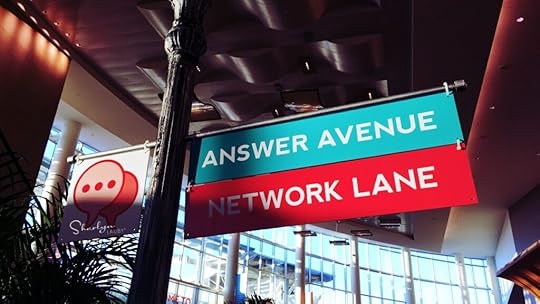
Estimated reading time: 3 minutes
I mentioned in a previous article that I went to an artificial intelligence (AI) conference recently. One of the things that I found interesting was the conversation about AI and automation. While they are related, they’re definitely not the same.
Automation is setting up a technology that follows a defined order. For example, if I say ABC, then the technology will do XYZ. A common example in HR technology is when a candidate is no longer being considered for a job opening, the applicant tracking system (ATS) automatically sends an email letting the candidate know and thanking them for their time.
Artificial intelligence is a technology designed to replicate human thinking. An example might be if an employee has questions about a company benefit, they are able to get answers 24/7/365 using a chatbot.
This is where the intersection of automation and AI gets interesting. Because the definition of AI is to replicate human thinking, the goal of artificial intelligence isn’t to simply automate. The reason that organizations automate is to free up employees’ time for more valuable activities. So, using AI to simply automate, isn’t allowing AI to be as valuable as it should be.
That being said, before AI can get to the place where it’s doing more than automation and bringing high value, it needs to learn. And this is where us humans come in. If we’re using artificial intelligence, then we need to help the AI technology learn.
Think of it like a training class. We go to training and learn something. If we immediately apply what we’ve learned, then the chances of retaining that information / skill increases. If we don’t get the opportunity to apply what we learned in training, then it’s possible we won’t remember it.
Again, it brings us back to the importance of using artificial intelligence to help it learn so it can bring the most value.
It also raises a point about asking how technology providers are training their artificial intelligence. I’m not sure if you’ve seen it but there have been recent articles indicating that some technology providers are using a database called Library Genesis (aka LibGen) to teach their AI. In addition, there are reports of individuals and organizations challenging LibGen because they claim it devalues an author’s work.
You can do your own research and decide if you have an opinion about LibGen. I’m bringing it up because it’s one example of how AI is learning. And it seems to me that organizations and individuals purchasing and using AI tools will want to know that the AI they’re using is legit. Because if the goal is to have artificial intelligence replicate human thinking … well, then you want need it to be legit.
A while ago, I published an article talking about setting artificial intelligence goals. This conversation about automation and AI is a great example. If all an organization is trying to do is automate, then buying an AI tool might be overspending. However, if the goal is to truly get the most from artificial intelligence, then having an understanding of its learning process is essential.
Image captured by Sharlyn Lauby while exploring the streets of Orlando, FL
The post Artificial Intelligence and Automation: Know the Differences and Similarities appeared first on hr bartender.
April 22, 2025
Productivity Series [Part 2]: The 3/3/3 Method Keeps You On Schedule
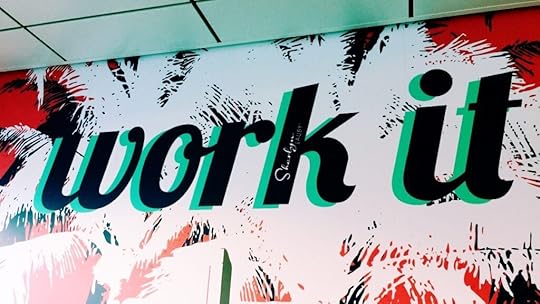
Estimated reading time: 3 minutes
We recently published our first Productivity Series article about the Pomodoro Technique and how it can be used to stay focused. One of the things I mentioned in the article was that the Pomodoro Technique could be challenging if you have several different tasks you need to work on. So, for the second article in our series, I want to talk about the 3/3/3 Method which could be helpful when you’re trying to work on multiple tasks.
Here’s how to use the 3/3/3 Method:
Spend 3 hours on your most important task.Complete 3 shorter tasks that are important but maybe you’ve been avoiding.End with 3 maintenance tasks. These are things that need to be regularly done.I can see the advantage of the 3/3/3 Method being that it creates structure to your workday. In the morning, spend 3 hours working on your most important task. Then in the afternoon, do the shorter tasks and the maintenance tasks.
The other advantage of this method is that it keeps us from falling behind on maintenance tasks. It’s so easy sometimes to push those routine things off for when we have free time and then … well, the free time just doesn’t come. So, 3/3/3 keeps us on schedule for getting those little things done.
On the other side, I do see a couple of challenges with the 3/3/3 Method. The first is in establishing what’s important. Knowing what tasks are the priority can take time. And depending on your responsibilities, there might be times when you need to get guidance from your manager on what’s most urgent.
The second challenge could be with time management. Of course, this is the whole reason that we’re exploring productivity methods. But I could definitely see times when someone doesn’t budget the right amount of time for a task and ends up running out of time in the day. Granted, sometimes emergencies happen, and we have to adjust. That’s fine. But if you’re using the 3/3/3 Method and running out of time on the regular basis, it might be worth some reflection. Is this a series of company emergencies or procrastination? Whatever the answer, it will need to be addressed.
For example, if the organization is one big dumpster fire after another, employees might need to talk with their manager about workload and timelines. It’s possible the manager didn’t realize and can help. And if the manager’s answer is that’s just the way the company is … well, you have some other things to consider. We’re not going to get into that here, but I will say there are company cultures that like the adrenaline rush of doing everything at the last minute. That may or may not be your style.
And if you’re finding that the challenge with 3/3/3 is procrastinating on your part, see if you can develop some techniques to assist. This could involve spending some time thinking about the reasons you’re procrastinating. Solutions could include being able to close a door and work in quiet. Or putting some headphones on. Maybe set up some sort of reward for micro-victory.
The 3/3/3 Method is designed to help individuals manage their day and get stuff done, including the small stuff, which can add up if it’s not monitored. This applies to our professional as well as our personal lives. The key is knowing what’s important. That’s going to be the next article in our productivity series … using a tool for managing priorities.
Image captured by Sharlyn Lauby somewhere off the coast of Miami, FL
The post Productivity Series [Part 2]: The 3/3/3 Method Keeps You On Schedule appeared first on hr bartender.
April 17, 2025
3 Criteria for Pre-Employment Assessments

Estimated reading time: 3 minutes
82% of organizations require work samples or assessments as part of the hiring process according to the Society for Human Resource Management (SHRM). 78% of human resources professionals indicated that assessments have improved their quality of hire. So, it’s not unusual for pre-employment assessments to be a part of the hiring process.
If you’re using pre-employment assessments for hiring, it’s important to be sure that you’re using them properly. I was reminded of this recently in an article from The Wall Street Journal titled “How Flunking a Personality Test Can Cost You Your Dream Job”. The article talks about what a personality test might indicate about a candidate’s “fit” for the job.
When organizations make the decision to use a pre-employment assessment, they need to identify the purpose for doing so. For example, an organization might administer an assessment to candidates applying for an administrative position to see how proficient they are in Microsoft Excel. Typically, the assessment is directly related to the job.
Organizations can do personality assessments but again, they should identify the goal for doing so. And be able to defend it should they be challenged on the use of a personality assessment. But we’ll leave that discussion for our friendly legal counsel. There are three criteria that organizations should look for when considering a pre-employment assessment of any kind.
Validity means that the assessment measures what it’s supposed to measure. If we use the example above with the administrative position and Microsoft Excel, the assessment should measure proficiency in that program. Not Word. Not PowerPoint. The assessment is valid for measuring proficiency in Excel. Reliability means that the assessment should yield consistent results. If I’m applying for an administrative role and I take the Excel assessment twice, I should receive similar results (not necessarily exact, but close). Valid for Intended Use means that the assessment has been validated for the way it is being used. In this case, the pre-employment assessment should be validated for hiring and selection because that’s how it’s being used. There are wonderful assessments in the market, but that doesn’t mean they are all validated for selection.I want to take a moment to emphasize the last point about pre-employment assessments being validated for its intended use. You might be familiar with an assessment called the Myers-Briggs Type Indicator (MBTI). It’s a popular assessment often used in personal and professional development. It’s not validated for hiring and selection. So, it wouldn’t be appropriate to have discussions like “We need a few more INTJs around the office.”.
Organizations should definitely consider using pre-employment assessments in their hiring and selection process. They can bring tremendous value. But use them the right way. And if there are other assessments that the organization likes for professional development – great! – use them too. Again, using assessments the right way will bring the best results.
Image captured by Sharlyn Lauby after speaking at the HR Technology Conference in Las Vegas, NV
The post 3 Criteria for Pre-Employment Assessments appeared first on hr bartender.
April 15, 2025
Artificial Intelligence: Keep Setting Goals for Self Learning

Estimated reading time: 4 minutes
I recently attended an artificial intelligence conference hosted by the University of Florida. I decided to attend this event because I wanted to learn more about artificial intelligence (AI) and I wanted to hear what people outside of the human resources profession were saying. While I love a good HR conference, sometimes it’s good to hear what people outside the profession are saying (and not just about AI). If you haven’t tried it, I highly recommend it.
This event was focused on bringing AI into the classroom and I thought it would be interesting to hear how educators are planning to use AI in developing and delivering to students. My thought is that the ideas could be adapted to the corporate learning environment.
One of the first terms I learned during the event was “technological singularity”. It’s defined as “a hypothetical point in time when technological growth becomes uncontrollable and irreversible, resulting in unforeseeable consequences for human civilization”. Just typing the definition gives me dystopian novel vibes. My takeaway isn’t the end of civilization but rather that this is what organizations go through when they’re trying to decide if something is a fad or a significant trend.
We do this all the time in our personal and professional lives. Personally, we have to make decisions like, “Are these sneakers in style? Or am I going to regret this decision in a couple of months?” Professionally, people have to decide if getting a specific certification will really help their career or is it just the “in” thing to do right now?
Organizations are no different. Remember when social media started appearing more often in the news? Some people said, “It’s a fad.” Other companies said, “We don’t believe it’s a fad and we’re going to be early adopters and hire a social media team.” Over time, organizations that might have originally tagged social media as a fad changed their mind and followed behind the early adopters. There’s absolutely nothing wrong with that.
But let’s go back to artificial intelligence. Are we at that point where AI is mainstream and therefore, a permanent part of business? I think the answer is yes. This doesn’t mean that AI won’t evolve over time. Organizations will find new uses for it. Because AI isn’t going away, individuals and organizations have to keep setting goals to learn more about AI and the best way to use it.
Organizations need to figure out how they will upskill and reskill current employees in the proper and ethical use of AI.It could make some sense to identify some AI evangelists who could encourage employees to use AI tools. This could be a combination of managers and line employees. Find ways to bring AI activities into company learning events such as on-the-job training, microlearning, internal webinars, and podcasts.I totally believe in the concept of self-efficacy. It’s the idea that if people believe they can do something they will try to accomplish it. It’s not about something being easy. But if people feel they can’t accomplish it, then they might not try. That’s why I mentioned the term technological singularity. If people feel that they’re so far behind the AI learning curve that they can’t possibly catch up, then they might not put forward the effort to learn.
Organizations and individuals need to keep setting self-learning goals where artificial intelligence is concerned. Yes, AI seems to be a part of everything. That doesn’t mean we can’t learn how to use it and have it positively benefit our personal and professional lives.
Image captured by Sharlyn Lauby after speaking at the Flora Icelandic HR Management Conference in Reykjavik, Iceland
The post Artificial Intelligence: Keep Setting Goals for Self Learning appeared first on hr bartender.
April 13, 2025
Productivity Series [Part 1]: Stay Focused Using the Pomodoro Technique
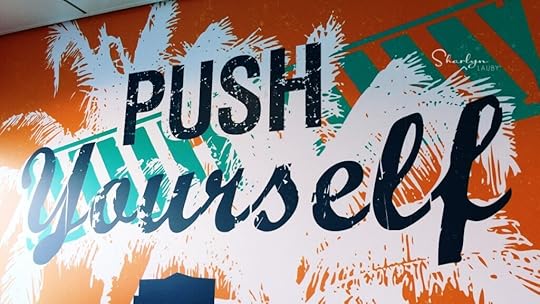
Estimated reading time: 4 minutes
I recently saw a little chart on the Facebook account BooksForAspirants talking about six ways to get things done (below). I don’t know who put it together … but it did say to feel free to use it, so I’m going to. With all the talk about being more effective and efficient, I thought it’s a good time to remember some strategies for being more productive.
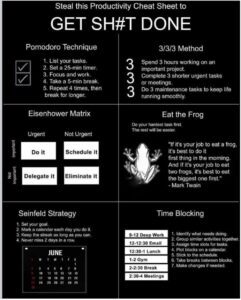
While I thought that the image with different productivity methods is great, I also thought that there could be a challenge in figuring out when to use each. So, I wanted to elaborate on them. Think of this as a productivity series. The first method I want to discuss is the Promodoro Technique.
The Pomodoro Technique is a time management method developed by Francesco Cirillo in the late 1980s. The idea behind the technique is to use a timer (typically 25 minutes) to break work into intervals. Fun factoid: each interval is known as a pomodoro, from the Italian word for tomato, after the tomato shaped kitchen timer Cirillo used as a student. The technique has six steps:
Decide on the task that needs to be done.Set the timer for 25 minutes.Work on the task.When the timer goes off, take a break (5ish minutes).Repeat steps 2-4 until you complete 4 rounds.After the 4th round, take a longer break (20ish minutes). Then return to step 2.I can see the Pomodoro Technique being very useful when you need to focus on specific task. Especially an intense one. For example, if I’m reviewing a set of data, I might work on cleaning the data for 25 minutes and then take a break to clear my head. In fact, I could take it one step further and say during round one, I’ll look for duplicates. In round two, I’ll check for missing values. Round three will focus on valid data and finally in round four, I’ll check for outliers.
Another benefit to using the Pomodoro Technique is the ease of the process. With everything on our computers, phones, and watches, we don’t need to carry around a tomato timer (unless we want to, of course). So, we might be able to do the Pomodoro Technique from anywhere.
The challenge with the Pomodoro Technique is it could be difficult to do when you have a day with meetings, phone calls, and/or a bunch of little things that need to get done. It might be necessary to block off some time on the calendar to be able to do this well. And that’s okay. Honestly, I don’t know that we think about blocking time on our calendars to use a productivity technique. Sometimes, we might think just blocking the time itself is the productivity technique.
Another challenge with this technique could be the structure of it all. Some people could find this level of structure too much. And this technique might not be ideal for certain creative tasks. Which is the whole reason we’re having this conversation today. We need to find and use the right tool for the task.
If you’ve never tried the Pomodoro Technique, give it a try sometime. See if you like it. Don’t forget to do a quick debrief at the end. 1) What went well? Even if you don’t like the technique, you might find there were a couple of things that did go well. 2) What would you do differently next time? Maybe it’s change your breaks from 5 to 10 minutes. It’s your productivity. Feel free to tweak it to meet your needs.
Because the end result will be exactly what you’re looking for … and that’s better productivity.
Image captured by Sharlyn Lauby somewhere off the coast of Miami, FL
The post Productivity Series [Part 1]: Stay Focused Using the Pomodoro Technique appeared first on hr bartender.
April 10, 2025
Tips for Effective Consensus Building

Estimated reading time: 4 minutes
I recently published an article on how groups make decisions. One of the ways is by building consensus. I wanted to elaborate on it today because groups can often get consensus building wrong.
Teams sometimes believe that the goal of consensus building is to get everyone to fall in love with the decision. It’s not. In fact, the goal isn’t even to get everyone to like the decision. The goal of consensus building is to get everyone to live with the decision. That’s a big difference.
Let me try to share an example from one of my favorite business books, “The Abilene Paradox” by Jerry B. Harvey. Side note: I had the pleasure of hearing him tell the story firsthand at a conference many years ago. I’m not sure that I could ever tell it the way Jerry does, so I won’t even try. But do check out the synopsis on Wikipedia … it’s really good.
The paradox lies in the perils of groupthink, when a team goes along with a decision even though individuals in the group don’t agree with it. An illustration of the paradox could be the office birthday celebration. It’s someone’s birthday so the tradition is to buy a cake. However, truth be told … the cake really isn’t that good. At some point, someone gets the guts to say something about it. Then the company realizes that everyone hates the cake but was going through the motions because they thought everyone else liked it. That’s the paradox.
While the birthday cake example is simple, you can see how this can translate when it comes to bigger decisions. The group makes a decision. A person doesn’t like it but goes along with it anyway. It turns out to be a bad decision. And the person says, “Me? I never liked the idea but everyone else wanted to do it, so I went along.”
I don’t have to tell you the problems with this. After the decision is made, the group is faced with a problem and people are backing away under “Me? I never thought it was a good idea. But I was outnumbered, so no need to bring it up.” I can hear the bus wheels screeching as I’m typing this.
So, if you want to avoid a “never liked the idea, but…” response, consider creating a way to discuss matters and build consensus. A colleague of mine shared a consensus building straw poll that they’ve found to be effective. The poll is straightforward. Ask each team member to rate their feelings about the decision using a 5L scale.
Loathe – Lament – Live – Like – Love
They loathe (or hate) it.
They lament or will gripe about it afterward.
They can live with it.
They like it.
They really, really love it.
Once everyone has weighed in, ask yourself, what’s the goal? Does everyone need to love the decision? Or as I mentioned in the intro, maybe it’s fine for everyone to just live with the decision.
The polling process allows the group to take a pulse on how everyone is feeling. If the goal is for everyone to live with the decision, then you can keep discussing until you reach that goal. Or not – then you must head off in a different direction. It also allows you to avoid those awkward moments when someone says, “Me? Never agreed with the decision.” Because everyone had to be comfortable with it (to a certain degree) for it to move forward.
Building a culture that allows for constructive feedback and questions will keep you from experiencing this paradox.
Image captured by Sharlyn Lauby while exploring the streets of Fort Lauderdale, FL
The post Tips for Effective Consensus Building appeared first on hr bartender.
April 8, 2025
Building a Total Reward Strategy That Will Attract and Retain Talent
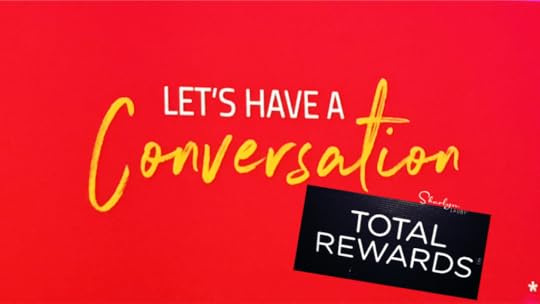
Estimated reading time: 8 minutes
A couple months ago, I published an article about what to expect in employee benefits with the new year and new administration. Organizations might want to use this time to evaluate their current total rewards strategy and possibly make some changes.
And when I say “make changes”, I’m not talking about slashing employee benefits. A benefits package can represent 30-40% of an employee’s total rewards package. Of course this is relative to industry, geography, and job title. The bottom-line is that an employee’s salary and benefits are a big reason they accept an offer and stay with the organization. So, I thought it might be a good idea to revisit this topic and talk about building a total reward strategy that allows organizations to attract and retain employees.
I asked our friends at HUB International if they wanted to continue the conversation and thankfully, they said yes. Cory Jorbin, Esquire, is the chief compliance officer for HUB International’s West Region Employee Benefits team. In his role, Cory consults with employers of all sizes to design, implement and ensure the compliance of employee benefit plans. He holds a Juris Doctorate from Cleveland State University, is a licensed attorney in the State of Illinois, and is admitted to practice before the U.S. Tax Court.
Cory has spoken to us before about Individual Coverage Health Reimbursement Arrangements and the Affordable Care Act. Please remember that his comments shouldn’t be construed as legal advice or as pertaining to any specific factual situations. If you have detailed employee benefit questions, they should be addressed directly with your friendly neighborhood labor and employment attorney or benefits broker.
Cory, thanks for being here. Let’s start with a definition. What are “total rewards”? And what’s the purpose of a total rewards strategy?
[Jorbin] Broadly, total rewards are the rewards that employers provide employees, including compensation and benefits. These can also include work/life balance, career development, and recognition. The purpose of a total rewards strategy is to shape the employer’s strategy for attracting and retaining talent. While employees choose where they want to work for a variety of reasons, the employer’s total rewards play a huge role.
One of the challenges we’re facing right now is that changes related to business and the workforce seem to happen almost every day. Obviously, organizations don’t want to be constantly changing their strategy. How can organizations tell when it’s the right time to make updates / revisions?

[Jorbin] One of the challenges with compensation data is that there is always a lag between when the data is collected and when it can be viewed. In this regard, employers are behind the data. Thankfully employers can age this data by adjusting it to account for the time lag. For example, if data is one year old and the consumer price index (CPI) increased 3.2% over the prior year, they could simply adjust the compensation data by 3.2%. Alternatively, if the employer provided annual compensation increases of 2.5% on average they may choose to use 2.5%.
Employers should also consider soft factors such as unemployment rates, the number of applicants they receive from job postings, and feedback from candidates. In markets with lower unemployment, employers may need to more aggressively adjust their compensation data than when unemployment is higher. Similarly, if potential candidates have salary requirements outside the employer’s range, or at the higher end of the range, this could be the result of using outdated, inaccurately aged data. Bear in mind this may not be the only cause for these results.
Is there a model or framework that organizations can use when updating / revising their strategy, so they don’t miss a step?
[Jorbin] A common approach employers use is the Assess–Align–Implement–Evaluate framework:
Assess: Analyze internal data, employee feedback, market benchmarks, and business priorities.Align: Ensure rewards offerings align with company culture, talent goals, and financial sustainability.Implement: Roll out changes through thoughtful planning, system updates, and communication.Evaluate: Monitor effectiveness, gather feedback, and make refinements over time.This approach can be used in other areas outside of total rewards too.
A total rewards update could involve changing or eliminating a current employee benefit. What are the advantages / disadvantages to keeping legacy benefits for current employees while offering something different to new employees?
[Jorbin] A total rewards strategy should include looking at the benefits the employer provides and determining whether they are the right benefits and whether they are valued by their employees.
Keeping certain benefits in place for current employees while offering something different for new employees is very challenging for a few key reasons. To start, the employer will need to either create separate benefits guides/communications for each group to highlight who is eligible for what; or they would have a single guide but then have to identify in that guide that Group A is eligible for a certain benefit, and Group B is eligible for a different benefit. Once employees in Group A realize they aren’t eligible for the same benefits as those in Group B (and vice versa), this will sow discontent among both groups. Inevitably there will be employees in both groups who would prefer the benefit offered to the other group. Even if they have separate benefits guides, if employees in each group work together they will eventually learn of the different benefits.
Depending on the nature of these benefits, they could also raise nondiscrimination concerns under either the §125 or §105(h) rules of the Internal Revenue Code. This could arise if the different benefits favor highly compensated employees. At least initially this will be the case, since the group of current employees includes those who are highly compensated.
Over time, this may change however this leads to another potential challenge. When an employer offers legacy employees different benefits and they hire a new executive, they are a new hire just like all other new hires and they are not eligible for the legacy benefits. Sometimes this can be a tough message for employers to deliver.
One possible advantage to this strategy is the ability to test drive a different benefit to see if it makes sense to expand to the entire group. For example, employers sometimes pilot new benefits with select groups of employees before rolling them out to their entire populations if they meet the employer’s goals.
(Editor’s Note : Just a reminder that Section 125 of the Internal Revenue Code is focused on cafeteria plans and Section 105 is focused on health reimbursement accounts.)

It’s one thing to have a strategy and another to communicate the strategy to employees. Can you share with us 2-3 things organizations need to keep in mind when they’re communicating a new or revised strategy to employees.
[Jorbin] Employers should start with being transparent and establishing trust. Be honest about what is changing and why. For example, if a benefit is being removed due to cost, or low utilization, share this with employees.
Next, employers should consider delivering the communications in multiple formats. Employees vary in how they want to receive such information and the formats most likely to impact them. This often means delivering this information via multiple channels to ensure it is consumed and understood.
Finally, employers should focus on clarity and simplicity in their communications. This means avoiding jargon that HR may be familiar with, but those outside of HR may not be. Employees need to understand what’s changing, why it matters, and how it impacts them personally.
Last question. We agree that employee benefits are an important part of total rewards. Organizations are going to want to get this right. Just in case an organization isn’t aware, what type of counsel / advice does a brokerage firm offer?
[Jorbin] Employers should absolutely use their brokers as resources in shaping the benefits component of their total rewards strategies. The benefits market is constantly evolving, with new vendors constantly coming to market. Brokers are generally knowledgeable about the various types of vendors and solutions in the market. Brokers can also help employers identify potential vendors and solutions that further the employer’s total rewards strategy and align with their goals. Just because a particular solution or vendor is growing in popularity does not mean it is the right solution for every employer.
I want to extend a huge thanks to Cory for sharing his knowledge with us. If you want to learn more about building a total rewards strategy, check out this ebook from HUB titled “Quality Employee Experience: A Roadmap to Better Benefits, Better Engagement, and Better Experiences”.
Building a total rewards strategy isn’t about being the biggest and best at everything. It is about offering a package that’s internally equitable and externally competitive. That allows organizations to attract and retain employees.
Image captured by Sharlyn Lauby while exploring the streets of Las Vegas, NV
The post Building a Total Reward Strategy That Will Attract and Retain Talent appeared first on hr bartender.
April 6, 2025
Bookmark This! Resources for Job Seekers

Estimated reading time: 3 minutes
I’m sure we’ve all seen the same news headlines about organizations conducting layoffs. Or noticed people on social media channels saying that they’re looking for a new opportunity. I don’t want to say that a job search is a regular activity, but people do look for jobs.
Whether you’re currently employed and considering a move or unemployed and definitely looking, being a job seeker is tough work. So, I wanted to share some resources that might help. I’ve known all of them for years and admired their work as being very relevant for today’s job seeker.
The Job Hopper is a substack written by Alison Doyle and Jen Luckwaldt. The site includes career advice, job search tips, and FREE career tools. Some of the topics discussed include “Where to Get Financial Help When You’re Unemployed” and “The Benefits of a Quiet Job Search on LinkedIn”.
Office Latte Podcast hosted by Erin Kennedy talks about new ways to navigate your career. Episodes include topics like skills-based hiring (from a job seeker perspective) and dealing with toxic people at work. Kennedy is a certified executive resume writer and career consultant.
HR Meg is Meg Martin SHRM-SCP, a human resources practitioner turned career strategist. Human resources professionals know what hiring managers are looking for and Martin uses her expertise to help people get jobs. Her blog tackles conversations like how to control the narrative that you’re overqualified and understanding your job offer letter.
Hannah Morgan is the Career Sherpa, a nationally recognized author and speaker on job search strategies. She is the author of the book, “The Infographic Resume: How to Create a Visual Portfolio that Showcases Your Skills and Lands the Job”. And her blog includes topics like using artificial intelligence in job search. Oh, and be sure to check out my podcast episode with Hannah where we talk about managing your career.
Lisa Rangel’s Chameleon Resumes site includes FREE classes on job search and updating your LinkedIn profile to get more attention during your job search. Rangel is regarded as a top executive resume expert and has shared her knowledge on Forbes, CNBC, Business Insider, and Fortune (just to name a few).
Miriam Salpeter is a social media strategist and consultant for job seekers and entrepreneurs. She has appeared on such major media outlets as CNN, The New York Times, ABC News and NBC News (to name just a few). Also, she is the author of six books including “Social Networking for Career Success” and the “Vault Guide to Networking”.
I believe each one of these resources has something unique to offer. You can bookmark this article and their websites to help you with your job search now … or possibly later. Maybe even share it with a friend or colleague that’s currently a job seeker.
Looking for a new opportunity is hard. A few years ago, I wrote an article about the “7 Skills You Need to Conduct an Effective Job Search”. The skills are still necessary today. Knowing your goals and staying focused are key.
Image captured by Sharlyn Lauby while exploring the streets of Los Angeles, CA
The post Bookmark This! Resources for Job Seekers appeared first on hr bartender.
April 3, 2025
Sustainable Change Management Takes Time
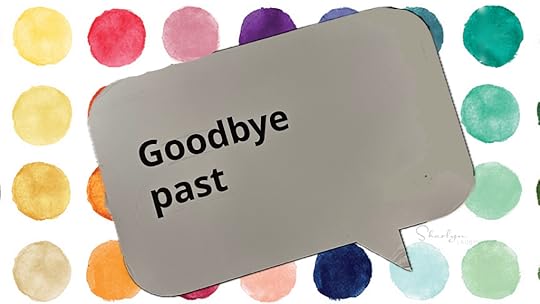
Estimated reading time: 3 minutes
Personal story. Mr. Bartender and I live in a neighborhood with some construction going on behind our home. When the construction started, we decided to we would wait to see what the outcome looks like before making any major decisions / changes to our backyard. I’m sure our neighbors think we’re making a big mistake, but we don’t want to make a change only to have to make another change once the construction is done.
Sometimes this happens at work as well. Organizations know they need to make a change, so they do … and then discover they need to make a second change. Which is frustrating because they spent time and resources making the first change. Now they must spend more time and more resources making a second change. If they had only waited a little longer, maybe they would have only had to manage one change.
While we can’t predict the future, I think it’s safe to say that it will involve change. When we’re presented with upcoming changes, it could make some sense to take a moment to evaluate if this change needs to be dealt with immediately or it can wait a little while. Maybe see how others are dealing with the change for some creative inspiration. Here are a couple of previous HR Bartender articles dealing with this exact topic – managing the timeline for change.
Change Management Thrives When We Take Time to Stop
While change will always be a part of our lives, we don’t have to always be in a constant state of change. Or at least not be in a constant state of major change. As individuals, having a few moments to stop, breathe, and celebrate our success can be exactly the motivation we need to tackle the next big change coming our way.
Change Management: Pause to Reflect Before Taking the First Step
Remember Lewin’s change model? It has three steps: Unfreeze, Change, Refreeze. To me, that first step – unfreeze – is difficult. We’re letting go of something. It might be a policy or procedure that we knew how to do without hesitation. Or making the decision to leave our employer or team. Or maybe not doing business with a particular company any longer. Take time to reflect and process what’s happening before “unfreezing”. It could make the change process easier.
If we manage change well, not only could it take less time and fewer resources, but employees might embrace the change faster. For example, have you ever worked with an organization that processes change quickly and does a poor job of it? People don’t embrace their change right away because “it’s only a matter of time and they’ll change it again”. And sure enough, they do.
Managing change well applies in both our professional and personal lives. We cannot avoid necessary and required changes. We can ask good questions about the timeline for implementing change and include that in our change management process. Ultimately, when we manage change well, it becomes sustainable – whether that’s in our personal or professional lives. Isn’t that what we’re looking for? Sustainable change.
Image captured by Sharlyn Lauby while exploring the streets of Fort Lauderdale, FL
The post Sustainable Change Management Takes Time appeared first on hr bartender.
Sharlyn J. Lauby's Blog
- Sharlyn J. Lauby's profile
- 10 followers



